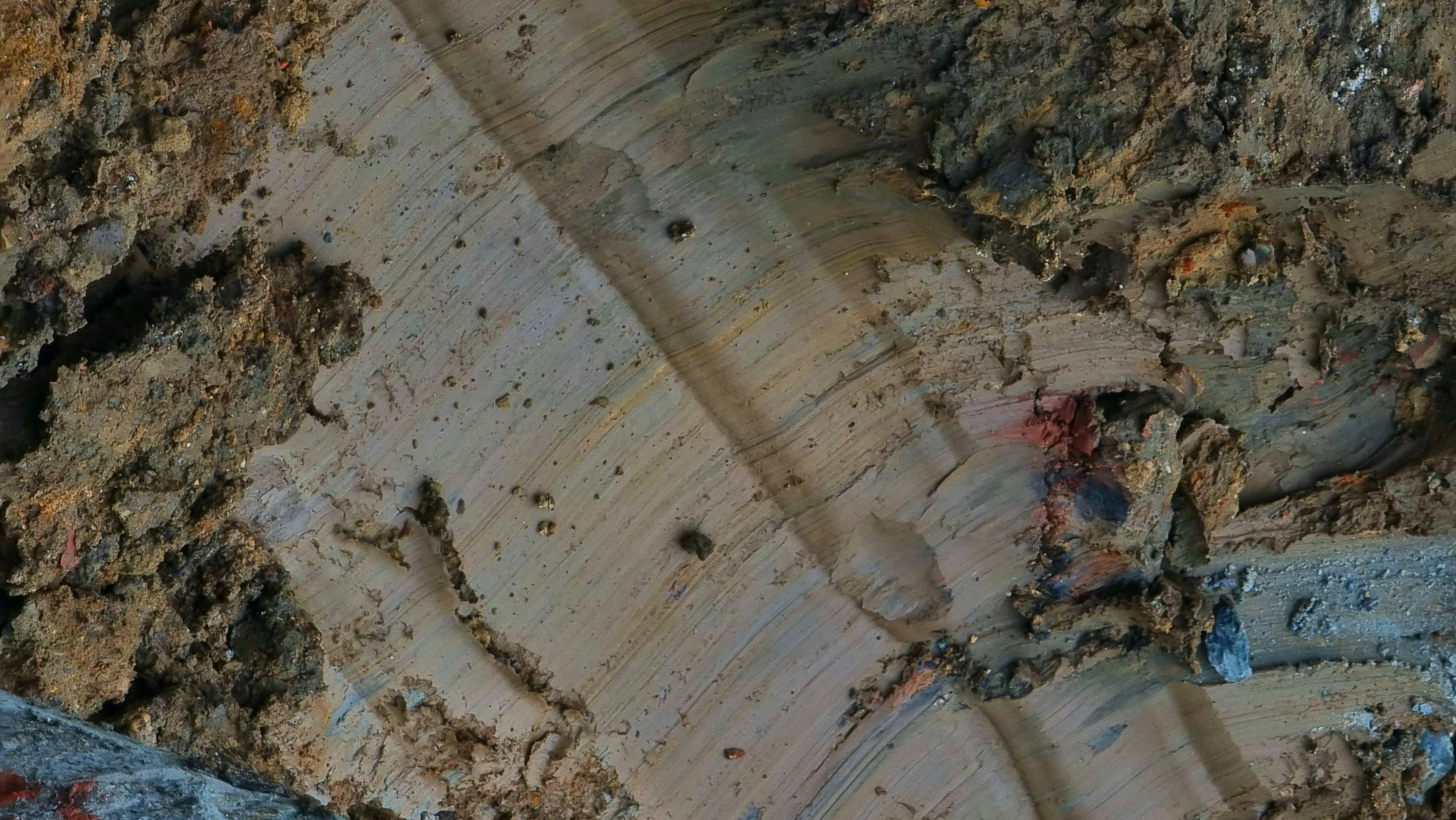
In Conversation with Sara Howard
What inspired you to create Circular Ceramics, and what challenges in the industry were you aiming to address?
As a consumer, I seek products with transparent supply chains. I want to know where they were made, who made them, and with what resources. Reflecting on my own ceramic practice, I realized I didn't know the origin of the minerals I used to create tableware. This led me to create Circular Ceramics and design an alternative material supply chain using waste streams from local industries. Integrating these materials into my ceramic production and sharing them with others has created a market for otherwise discarded materials and reduced the consumption of the earth’s finite resources.
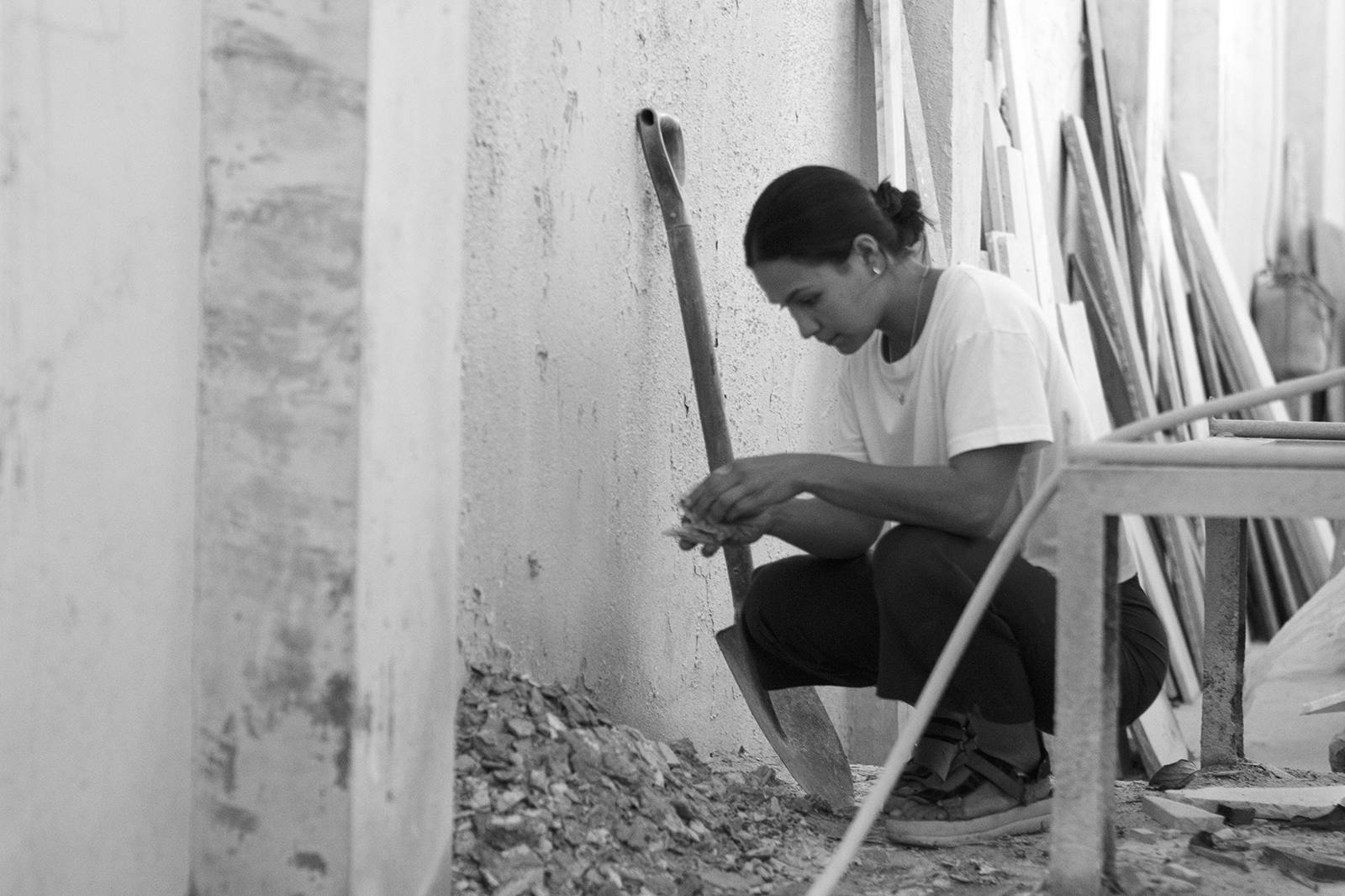
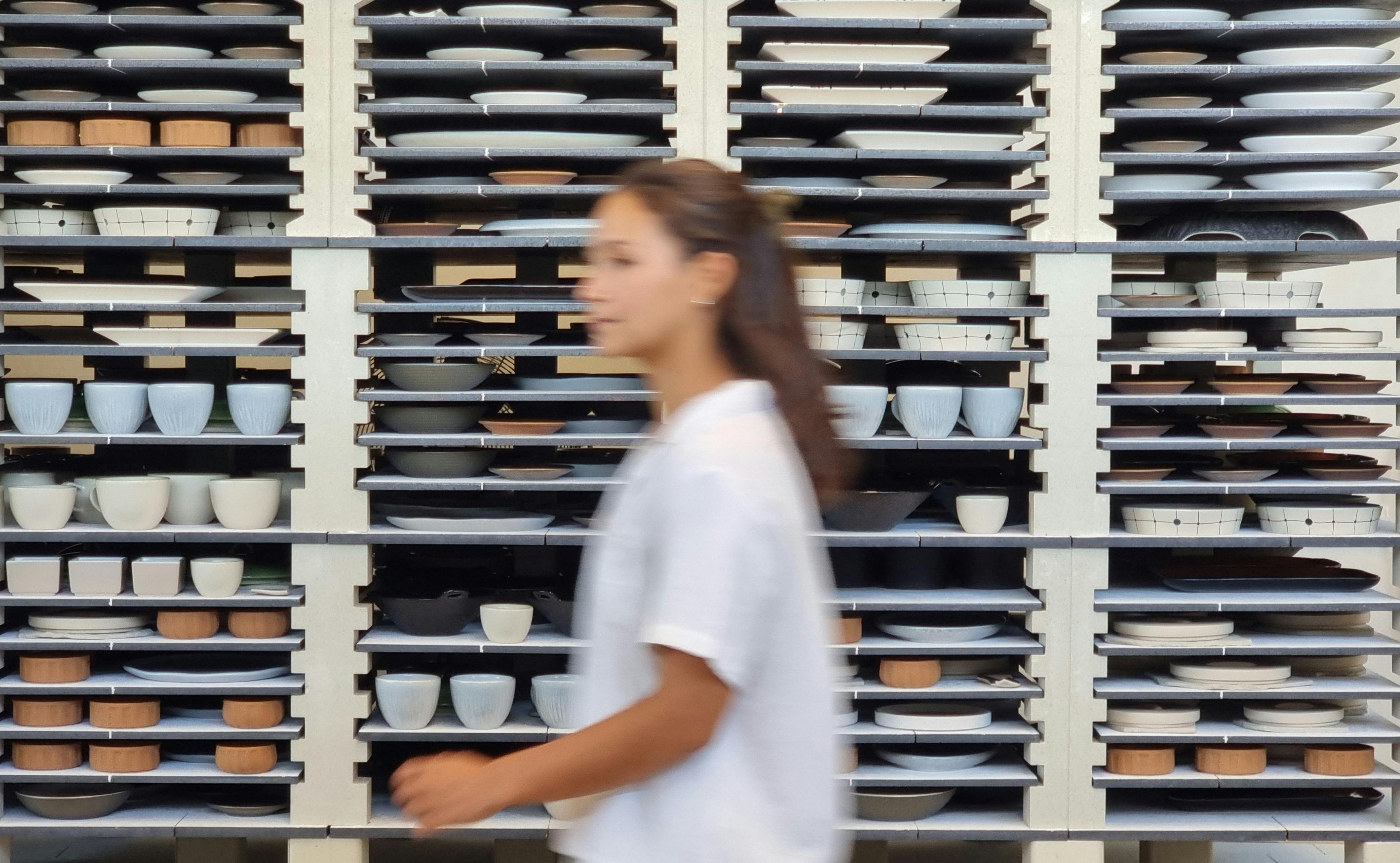
What are the biggest environmental challenges in the ceramic industry, and how does your work provide solutions?
Ceramics predominantly relies on non-regenerative resources extracted from mines and quarries worldwide in pursuit of the whitest clays with the highest firing temperatures. With human demand for ecological resources far exceeding what Earth can regenerate, this raises questions about how long we can continue to produce ceramics using current methods.
The additional pressure on our supply chains to source these materials exacerbates existing social and ecological issues related to resource extraction. Ceramic minerals, such as cobalt and copper, often trace back to artisanal mines where human rights violations occur, including child labor. Journalist Siddharth Kara, who witnessed the impact of cobalt extraction in the DRC firsthand, stated, "A child in the Congo dies every day so that people can plug in their mobile phones."
Building local waste material ecologies for ceramic producers reduces their dependency on virgin resources with blurred supply chains and uncertain long-term availability. This approach promotes sustainability and ethical sourcing by creating a market for otherwise discarded materials.
How has the industry responded to your focus on sustainable practices, and what progress have you seen?
The ceramic industry has responded positively to my focus on sustainable practices, recognizing the importance of ethical sourcing and environmental responsibility. Factors such as location, the owner's mindset, and the company's financial stability play crucial roles in determining the company's commitment to sustainability. Changing the status quo and establishing new norms in manufacturing is a gradual evolution that requires persistence, problem-solving, and long-term commitment. I was fortunate to work with Kevala Ceramics in Bali, which embraced these values thanks to its founder, Wendy Thomas. During my two years there, we established partnerships with four local manufacturers and NGOs, integrating their waste streams into our production processes. By implementing closed-loop systems, we reintroduced over 24 tonnes of by-products into production annually, creating a tableware collection made entirely from these materials. We also launched the ‘Cleaner Dishes Programme,’ educating all 200 staff members on practicing sustainability within their departments and at home.
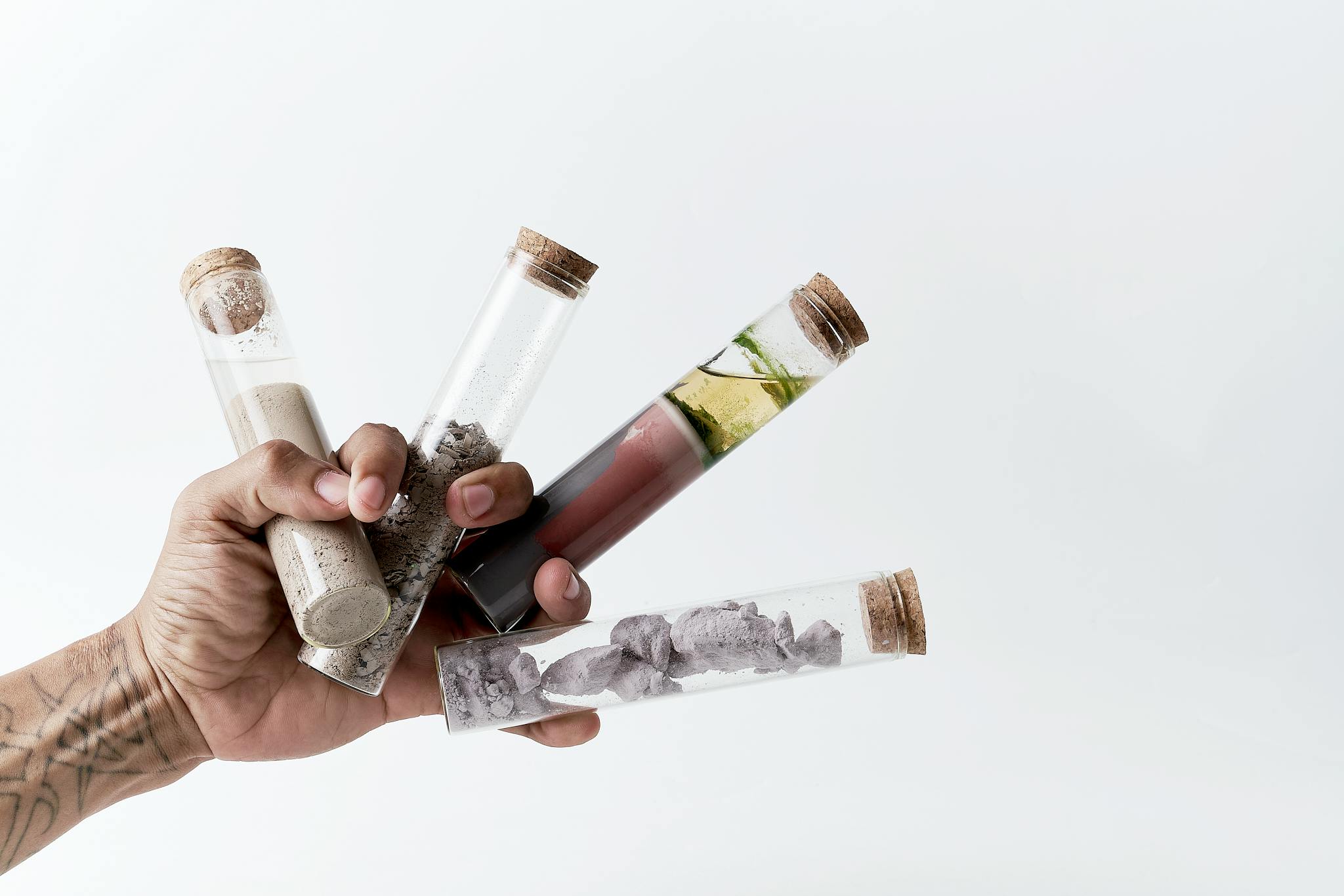
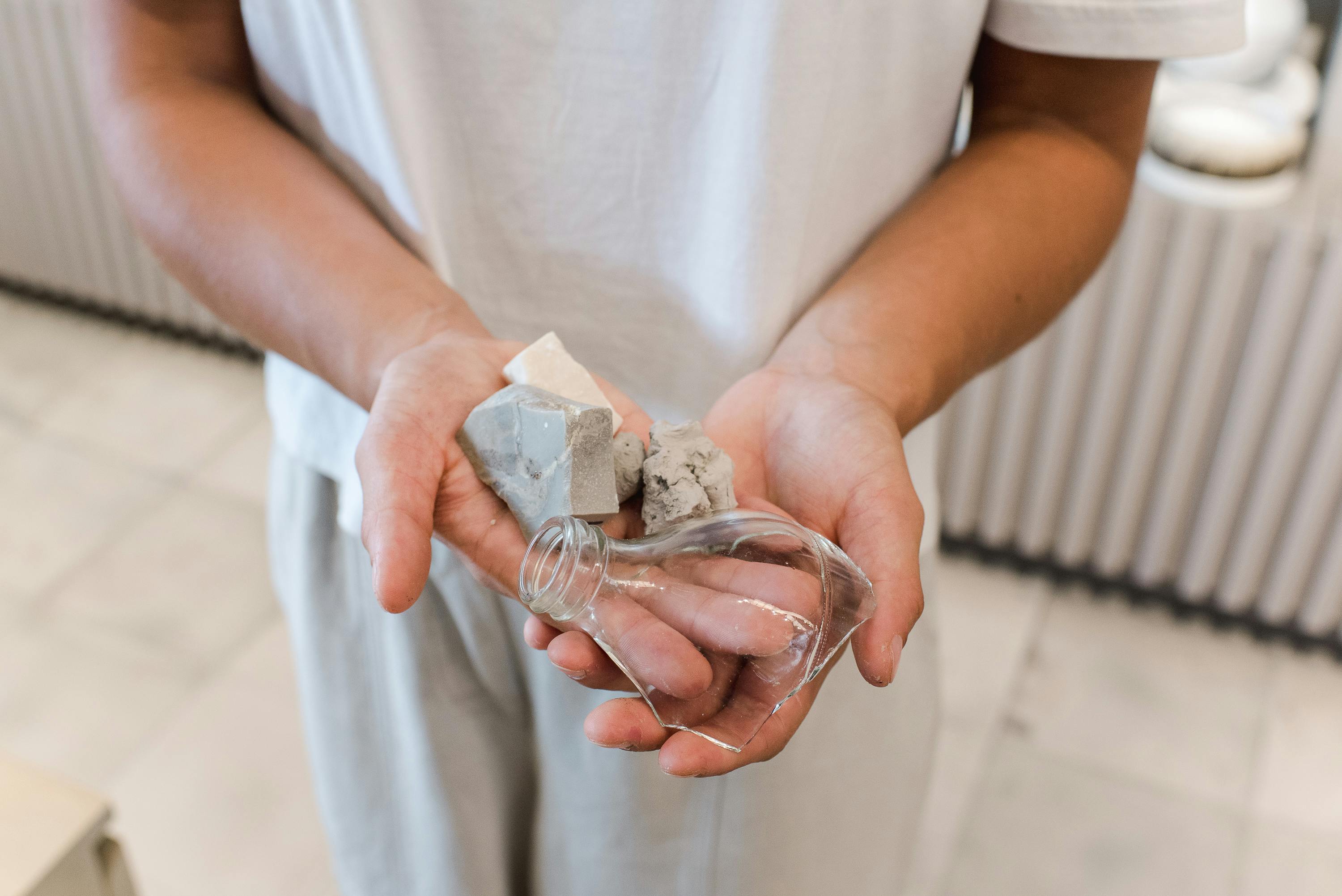
Why was it important for you to openly share your methods in Circular Ceramics?
As one ceramicist, the work I do alone will not have a significant impact. I believe it's vital that the wider community has access to solutions. Providing a starting point for others allows them to build on my work, accelerating our collective efforts. By releasing my work under the Creative Commons ShareAlike license, I require others to credit and share under the same terms, creating a chain of sustainable solutions that can be applied across practices globally.
Despite the challenges of the Creative Commons license not always being respected, I’ve found that by embracing this approach, my work has been able to evolve much faster. At the same time, I’ve gathered a community of ceramicists who share the same mission. This collective spirit makes the overwhelming task of tackling such a large issue more manageable. In collective cultures, we stop competing against each other and focus on the bigger goal: continuing to work with the materials we love while minimising harm to our planet.
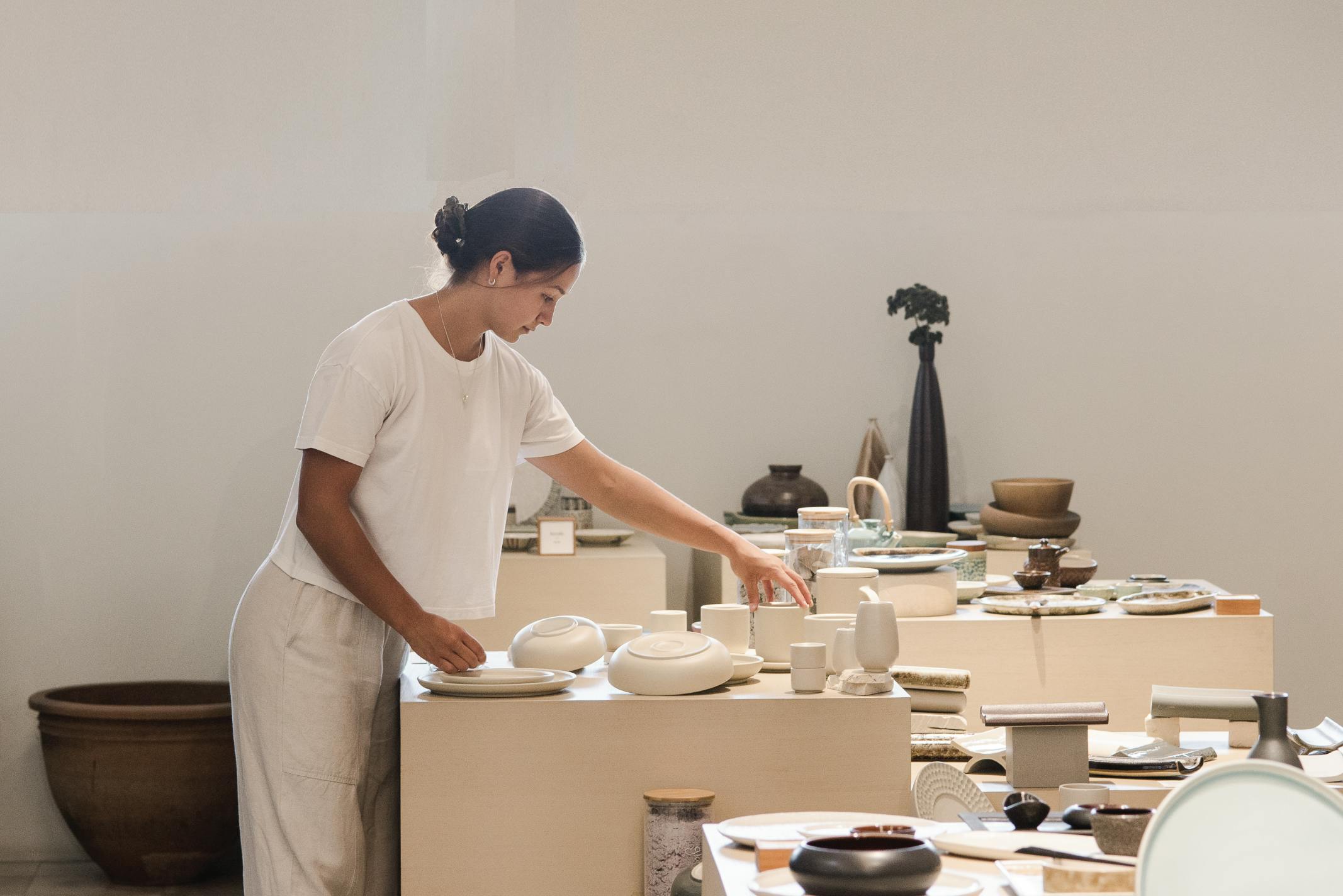
Have you seen significant adoption of these sustainable processes by artists or manufacturers?
My book, Circular Ceramics, was created to share my research and methods with fellow ceramicists. In Australia, Georgia Stevenson, Claire Ellis, and Amelia Black sourced the glass slurry outlined in my book for their ACS bulk-buy pop-up shop, creating a system that broke down barriers and provided access to materials not available on the commercial market.
Studio owners and technicians are particularly drawn to the book after witnessing the waste generated by their members. Heather and Suzanne at the Art Gallery Burlington in Canada took action by implementing new systems and continue to actively educate their members using Circular Ceramics as a resource.
I offer one-on-one consultancy to help ceramicists and studios reduce their ecological and social impact through better material sourcing and infrastructure. Each project is tailored to their unique sustainability goals, and it's exciting to see new, impactful work emerge from these journeys.
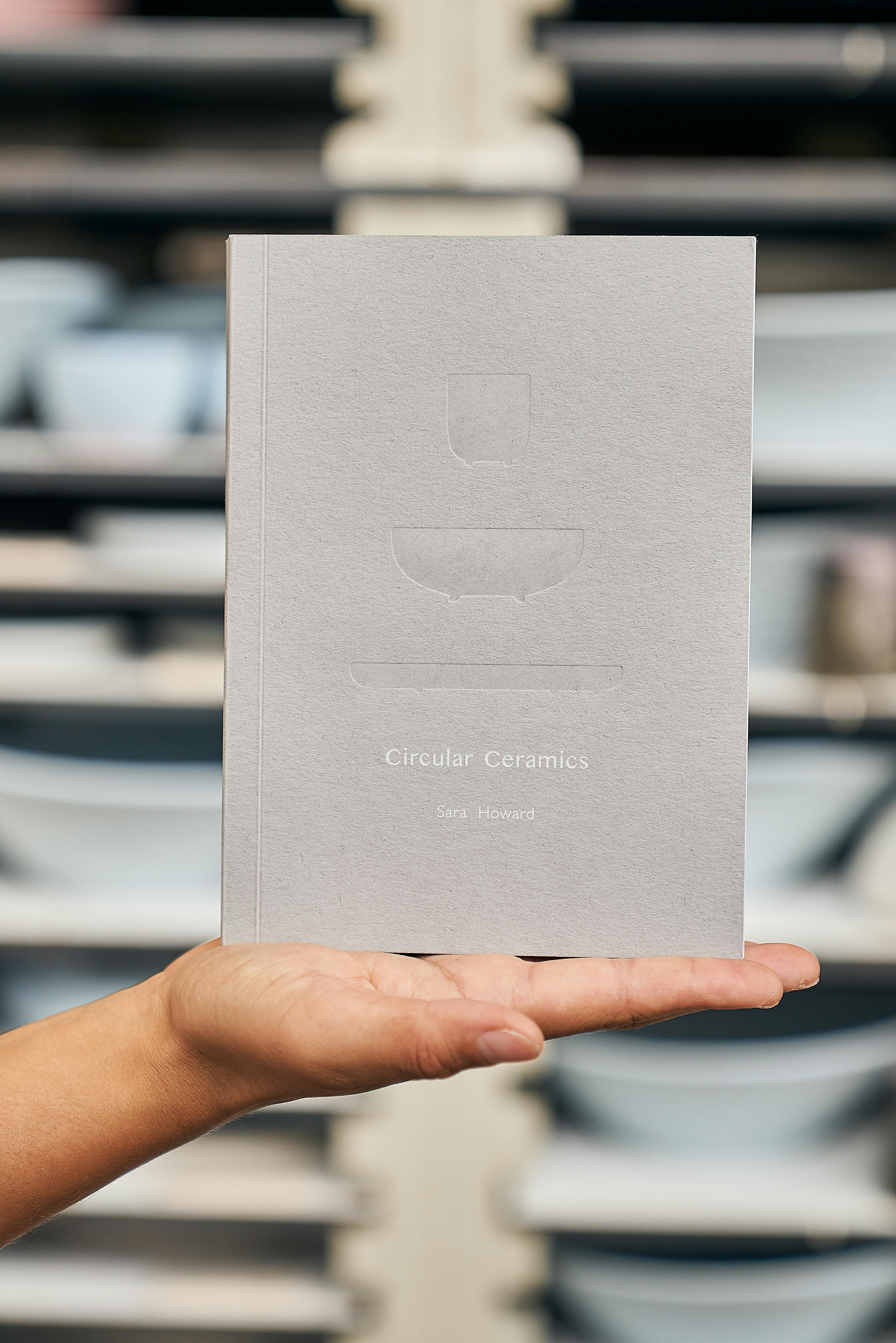
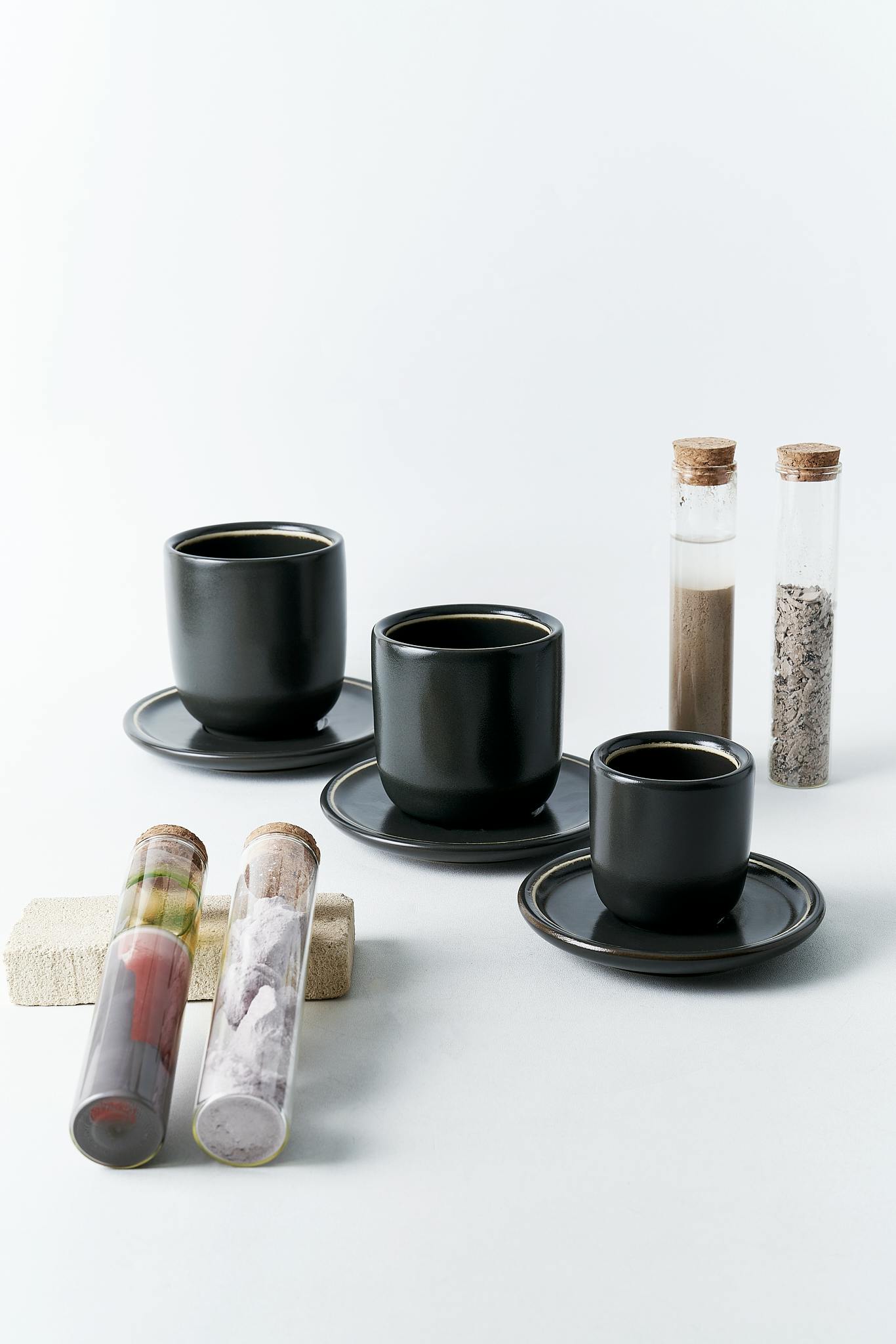
What advice would you give to designers aiming to incorporate sustainability into their work?
There are three pieces of advice I always give to ceramicists starting out on this journey. First, choose your battles. We can’t fix everything, but our knowledge and skills can make a significant impact in a focused area—this is a great starting point. Second, join forces with other industries and people from different backgrounds. Each of my projects wouldn’t have been viable without the symbiotic relationships across industries. Third, share knowledge to build communities and accelerate innovation.
And one more: be kind to yourself. This unknown territory can be testing and unforgiving, with dead ends seeming to appear at every turn. But with patience and persistence, these obstacles can be overcome, bringing great reward.
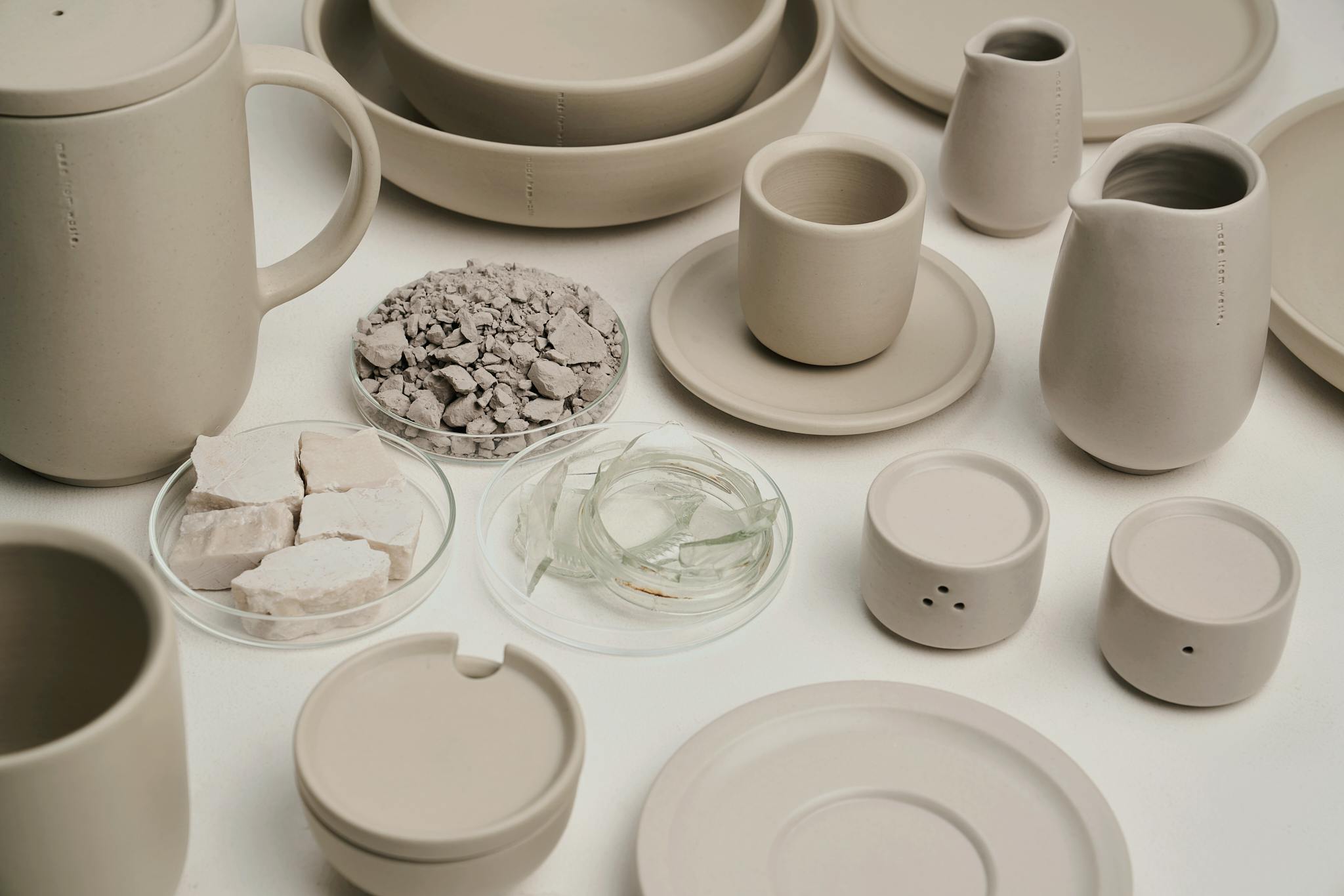
Golden Earth Studio reimagines construction by-products as creative materials. How does this align with your philosophy and practice?
The construction industry was one of the first sectors I built a relationship with when I began producing tableware from waste. Despite providing the primary material used in ceramics, the construction industry proved to be the hardest to engage. Obstacles included health and safety concerns, disruptions to construction timelines, and the fact that clay was only available during specific phases of land development.
Golden Earth Studio was born when I met Gabriel Lau, a land developer and founder of Golden Earth Developments, who shared a curiosity for circular materials. Together, we made the clay excavated from his sites in Wimbledon accessible to creatives. By offering this clay, which would otherwise be sent to landfill, we gave it a second life and reduced the reliance on mined, virgin raw materials. Within a couple of months, 40 creatives collected 1.6 tonnes of clay from a London construction site.
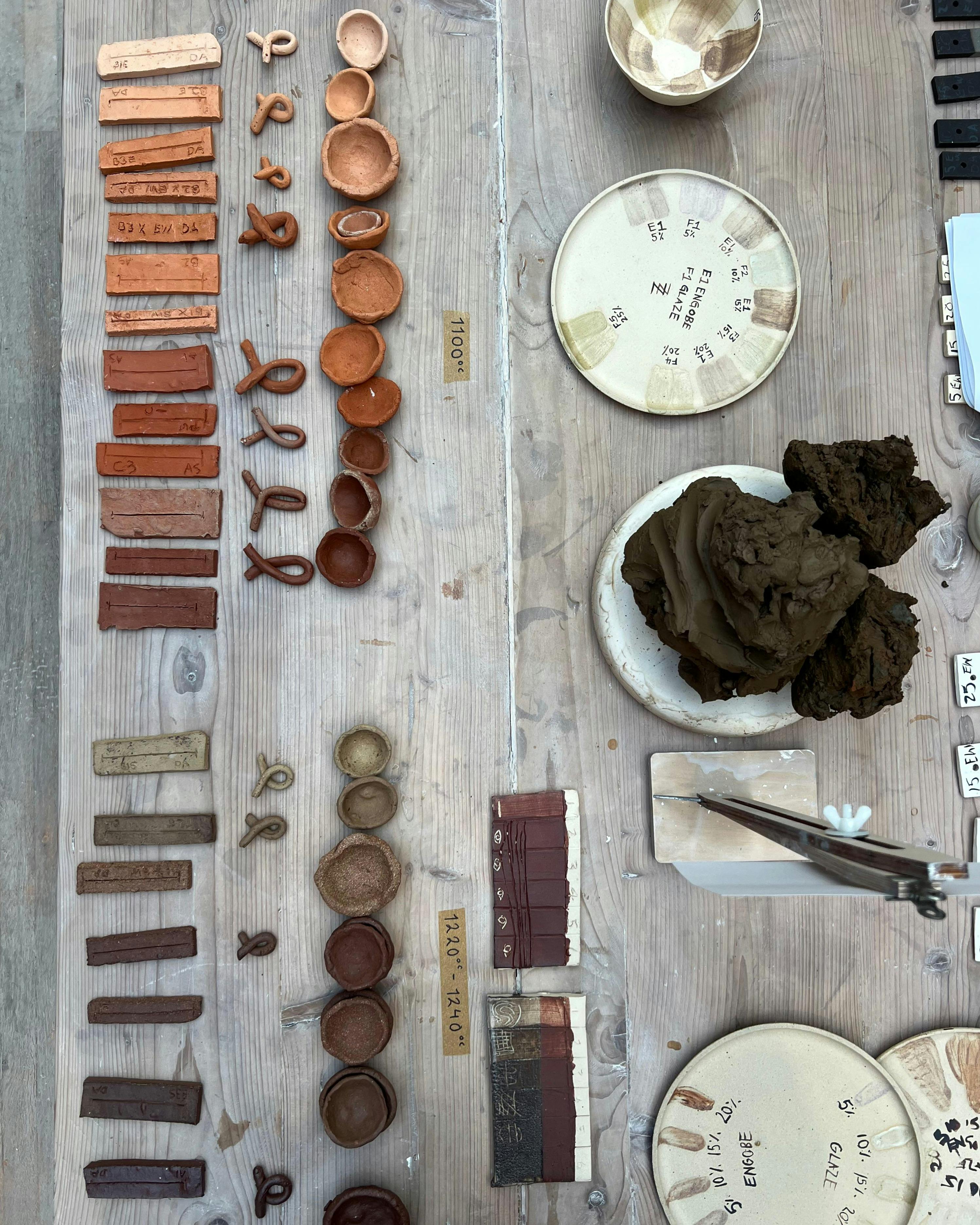
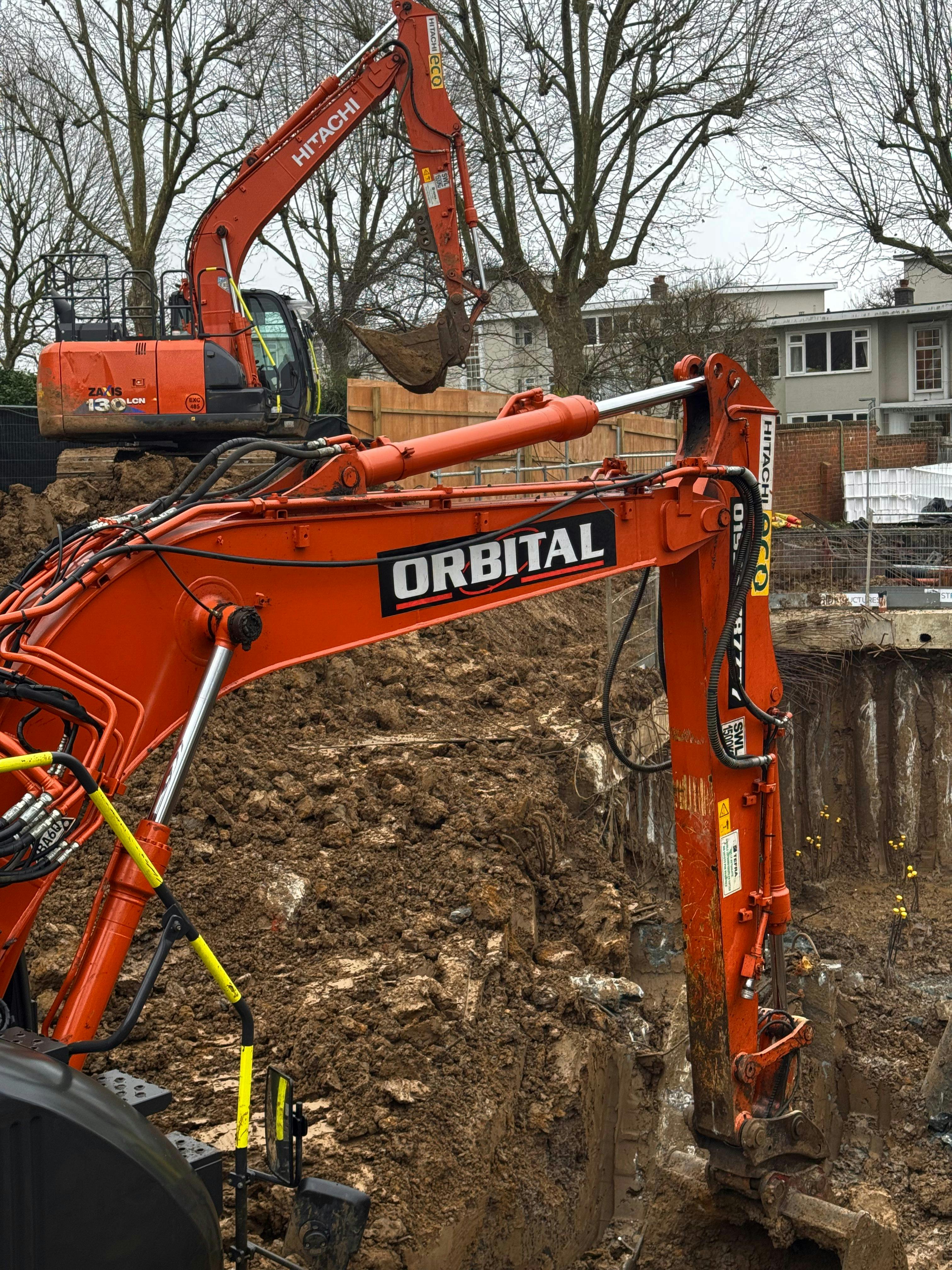
How does the studio’s emphasis on displaced materials and the Anthropocene influence your work and the broader conversation around sustainability?
Resources are becoming increasingly scarce, and as we continue down the path of unsustainable growth, we are digging deeper, displacing more communities, and disrupting wider ecosystems. Living in the Anthropocene reminds us that the question is no longer whether systems need to change, but how we can best implement those changes. By making construction clay accessible to those who use it in their practice, we offer an alternative to commercial raw materials which are becoming increasingly costly and damaging to extract.
What are the main challenges in translating complex topics like circularity into accessible and engaging art?
One aspect of Golden Earth Studio that I am constantly exploring is how to break down barriers so more artists can engage with our clay. With no instructions, firing temperatures, and little consistency in the clay we provide, I anticipate the reservations artists may have and work to address them. One approach is compiling a clay zine that documents how creatives have processed and incorporated the material into their work. I also conducted a workshop at Culford Studio where we collectively developed a range of clay bodies, glazes, slips, and engobes to create a database of information.
Documenting the material's origin and showing how creatives transform it visually conveys the circularity of materials. Storytelling is essential when selling both art and functional ware through our gallery, helping to convey our mission and encourage more individuals and businesses to get on board.
The Free Clay initiative distributes reclaimed clay to artists. What impact has this had on sustainable practices, and have there been any surprising uses of the material?
Providing an alternative to energy-intensive commercial materials has opened doors for many creatives in ways I never imagined. Josef Stoger has developed a clay body for 3D printing ceramic self-watering planters, Jacob Chan has created functional products like sake sets, ginger jars, and a chess set where the two sides are distinguished by its firing temperature. Eleanor Herbosch has transformed the clay into striking abstract expressions that honor its origin and Ekta Bagri crafted rammed earth pieces that delicately showcased the material's qualities.
In the last few months of 2024, we’ve distributed even more clay, and I can't wait to see how it evolves in the hands of more creatives. Artists have traveled from as far as Margate and Bath to collect our free clay, which speaks volumes about a material that the construction industry deems a nuisance to dispose of. It’s a strong argument for why more land developers should consider alternative routes for their clay.
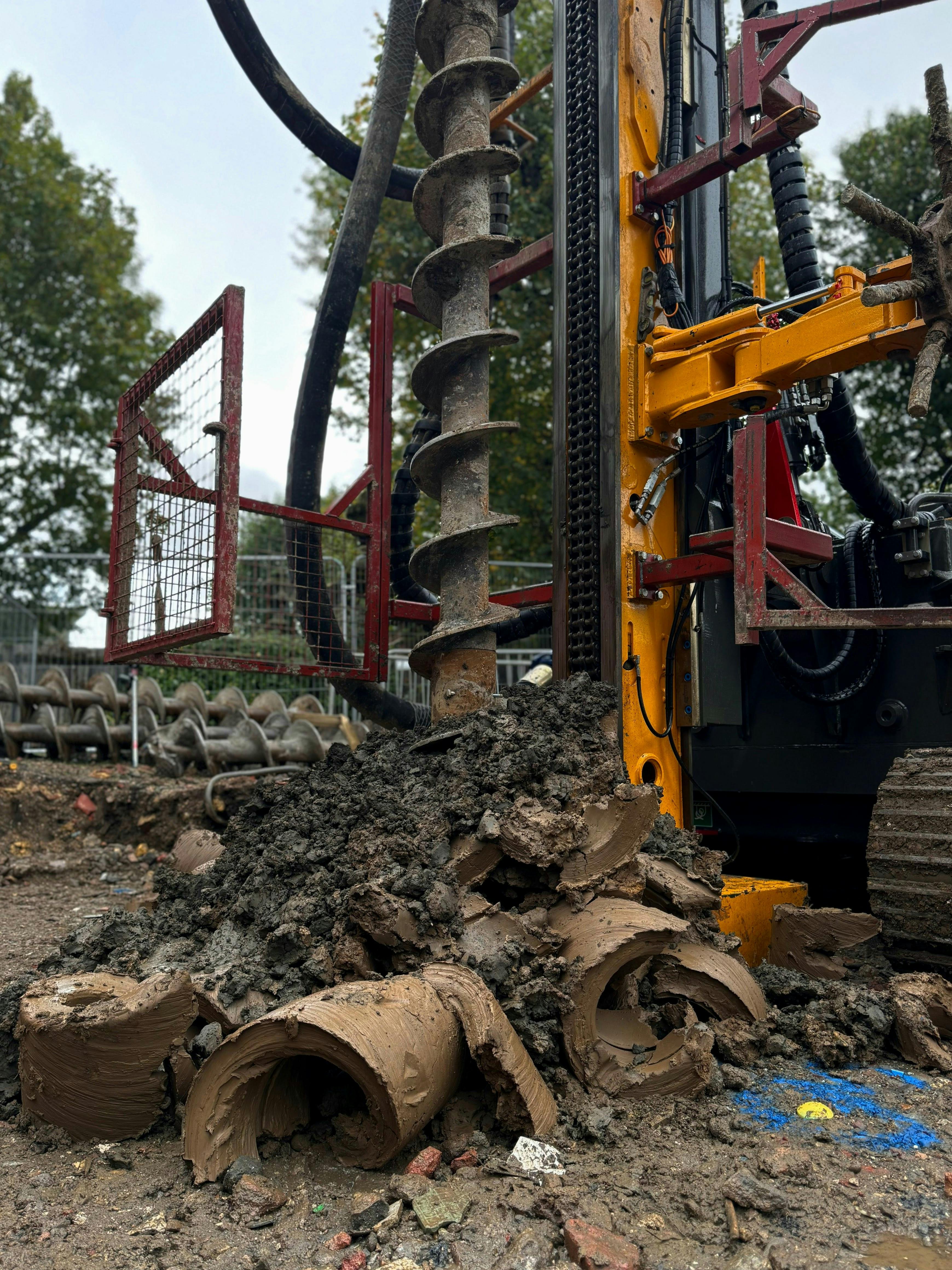
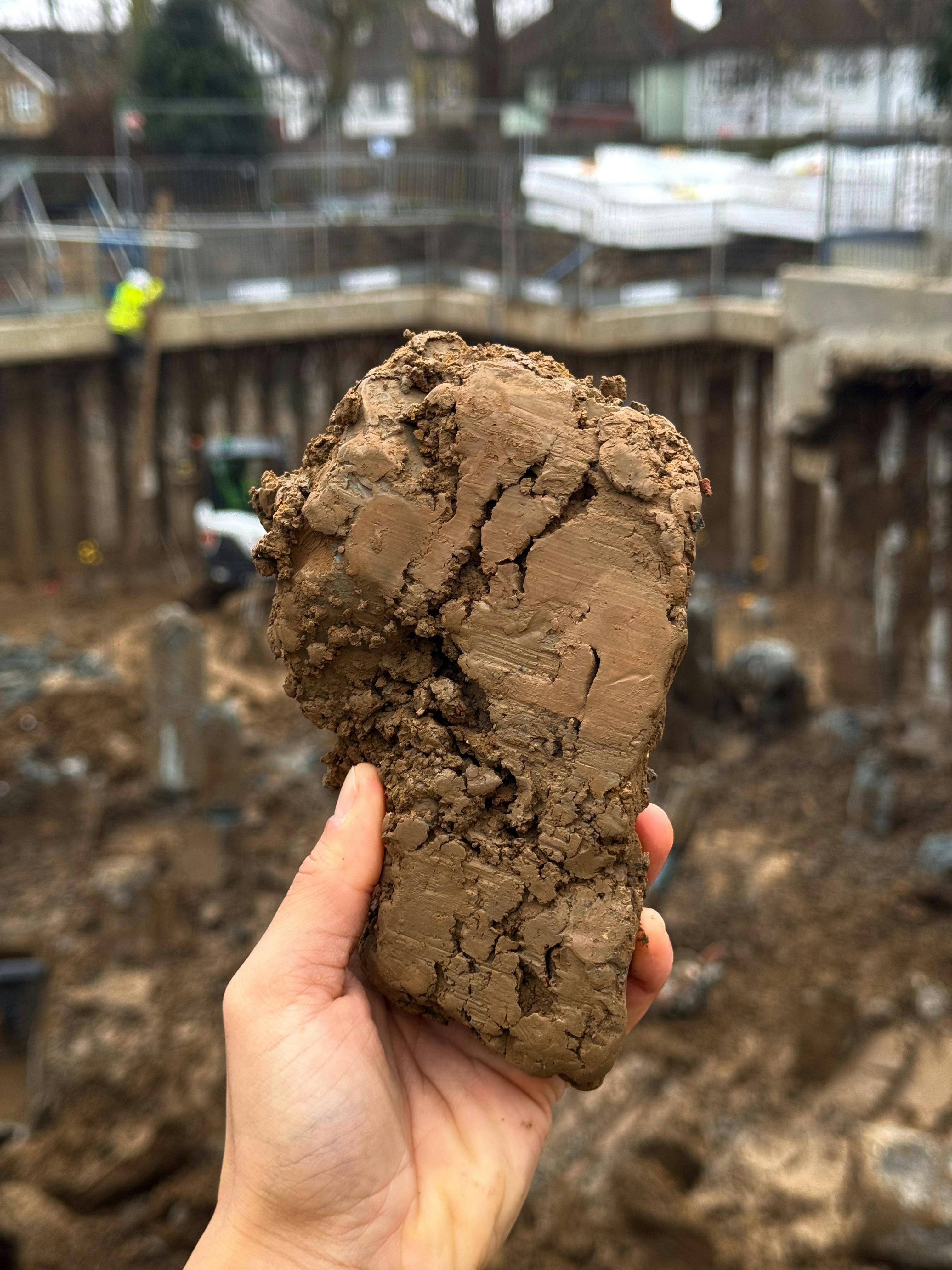
Golden Earth Studio is described as ever-evolving. What future directions or collaborations would you like to explore?
Where to start! We know our work makes only a small dent in the world of construction waste, but we’re constantly exploring how to expand our impact. Tackling a global issue that spans many industries opens up numerous avenues for growth. In 2025, we’ll be expanding our initiative to Southern California through a collaboration with Olla Ceramics as we learnt the same barriers to accessing construction by-products exist in the US. Collaborating with passionate, like-minded individuals like Ariana allows us to apply our framework globally.
How do you envision the future of sustainable design in ceramics and beyond?
I hope to see more ceramic studios and factories explore local materials from waste streams. I see the market for secondary resources growing in the near future with more ceramicists establishing new material networks for communities to access. Of course, this is far easier said than done, given that current systems are designed for efficiency and profit. I hope we can move towards a system where the impact of design is prioritised over profit, where we allow space for mistakes, and celebrate the lessons learned along the way.
https://sarahowardstudio.com/
@sara_howard
Golden Earth Studio
@goldenearthstudio